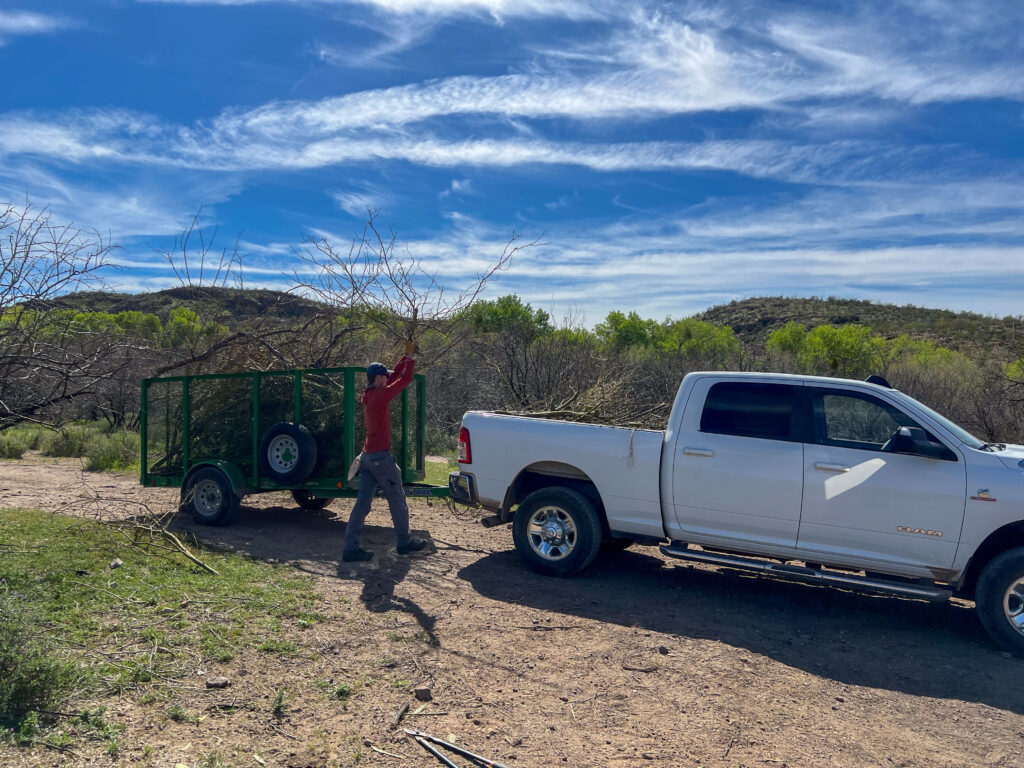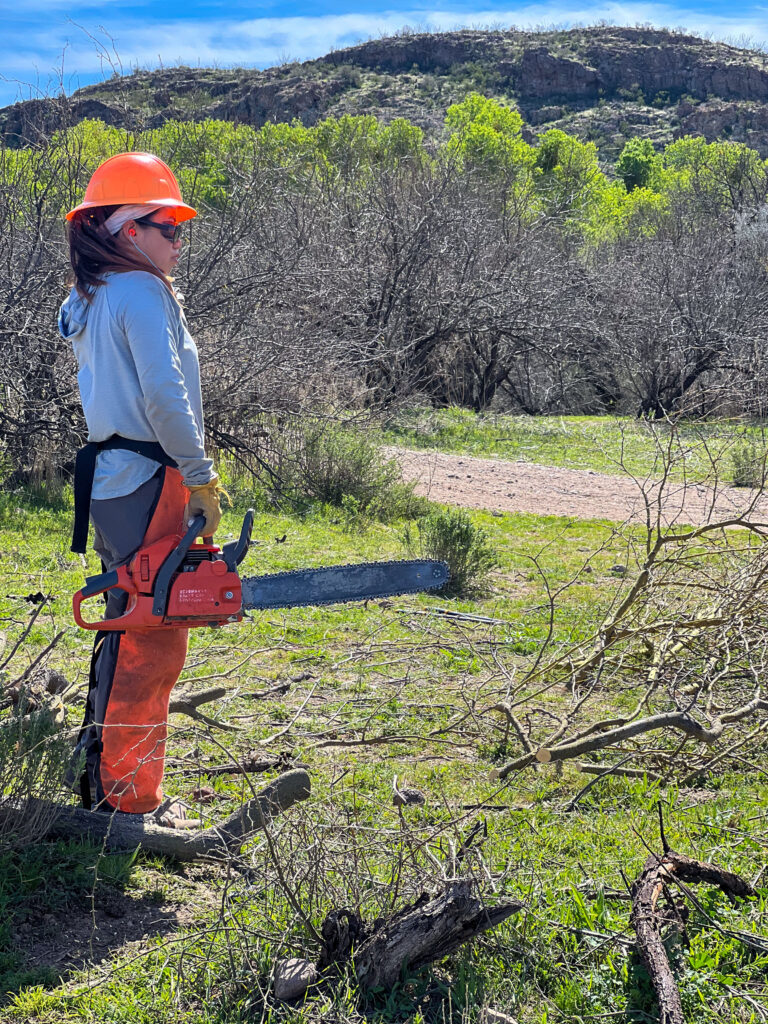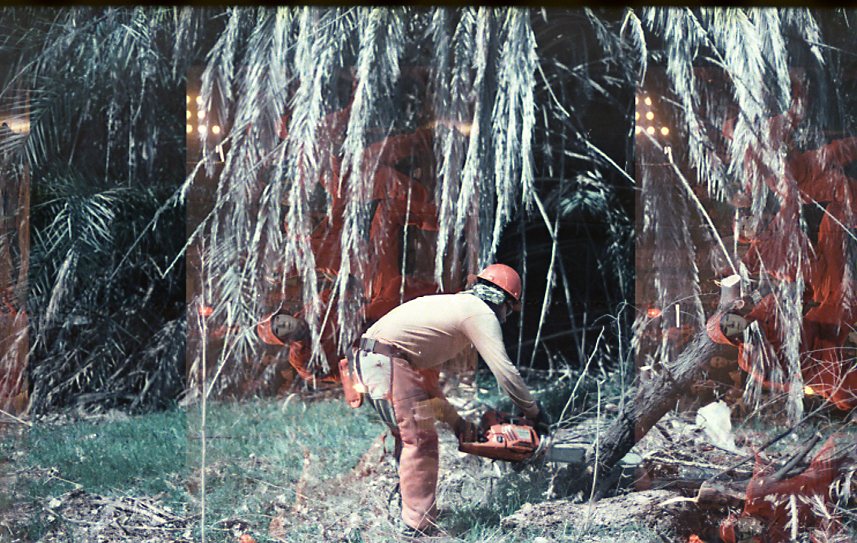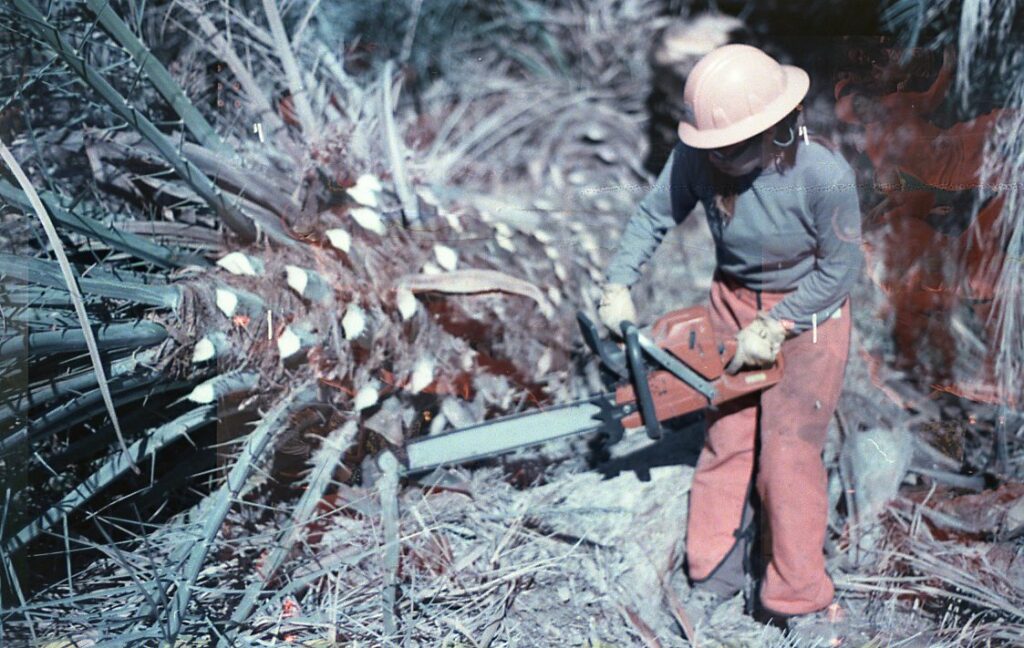
Written by Iman Chatila, Wild Stew Field Crew Member.
Have you ever looked at a palm tree and marveled at its tropical beauty? I used to, until I got stabbed repeatedly by the canary island date palm! This species was on our Queen Creek target list along with Mexican Palo Verde, African Sumac, Tree of Heaven, Oleander and more. Chloe, Jonathan, Nico, and I spent the week mapping and treating these invasives, as well as hauling cut material to the dump for fuels reduction and to prevent resprouts and germination.
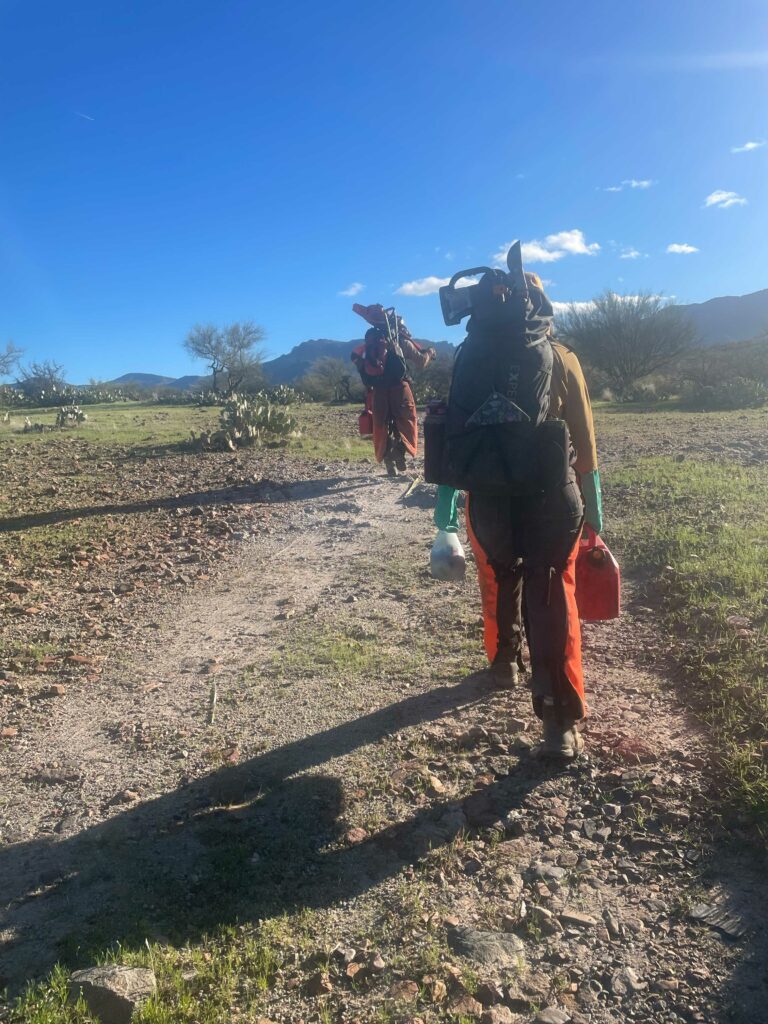
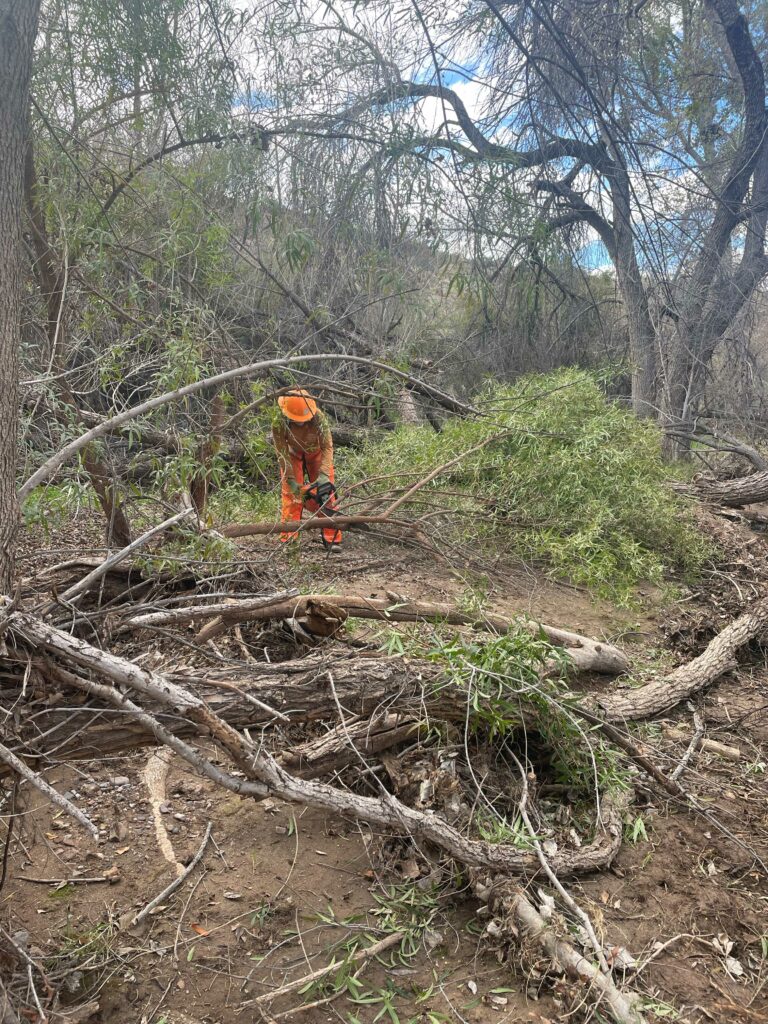
This was the beginning of primary treatment for Queen Creek, meaning many large non-native/invasive trees were dropped! It was particularly interesting learning and experiencing cutting palm trees, which have a unique fiber compared to the woody material I am more used to chainsawing. After tackling one huge Canary Island Date Palm among a large stand, we realized that was a job that could take all the hitch. So we decided to move on to the other species, for now. Unfortunately there were still plenty of thorns to deal with on the Mexican Palo Verde, and maneuvering around native mesquite and catclaw. Armed with chainsaws and sprayers full of forbidden gatorade (herbicide with blue dye), these competitors against a desirable native habitat were slain.
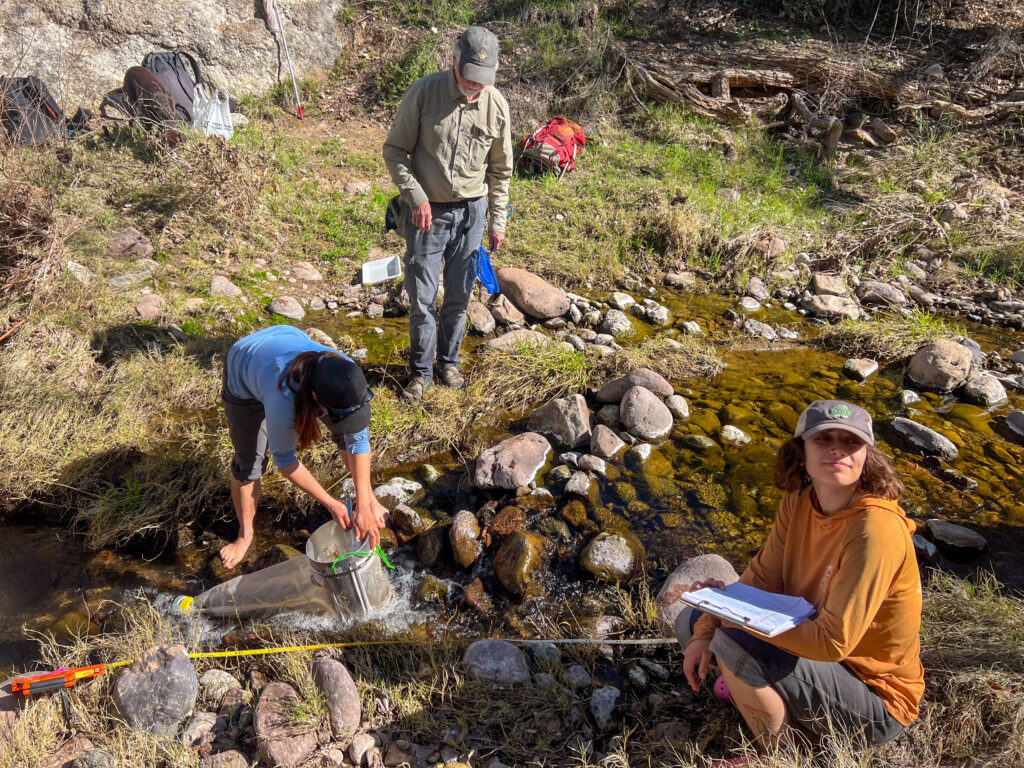
We had two special guest visitors this hitch, Lynne and Larry! Lynne, Wild Arizona’s Stewardship Program Manager, helped kick off the project and worked with us to ID target plants as well as various logistical needs. Larry is Wild Arizona’s Senior Ecologist, and he came out to teach how to collect samples for aquatic invertebrate surveys. This data will tell us about the water quality, which can be used to determine if our riparian restoration efforts are making a difference. Samples were taken upstream of the treatment area, in the treatment area, and downstream from the treatment area. Samples will need to be taken again pre monsoon and in the fall, to account for how flooding affects the creek. It was so fun to look at the different bugs that we never stop to observe during a regular workday!
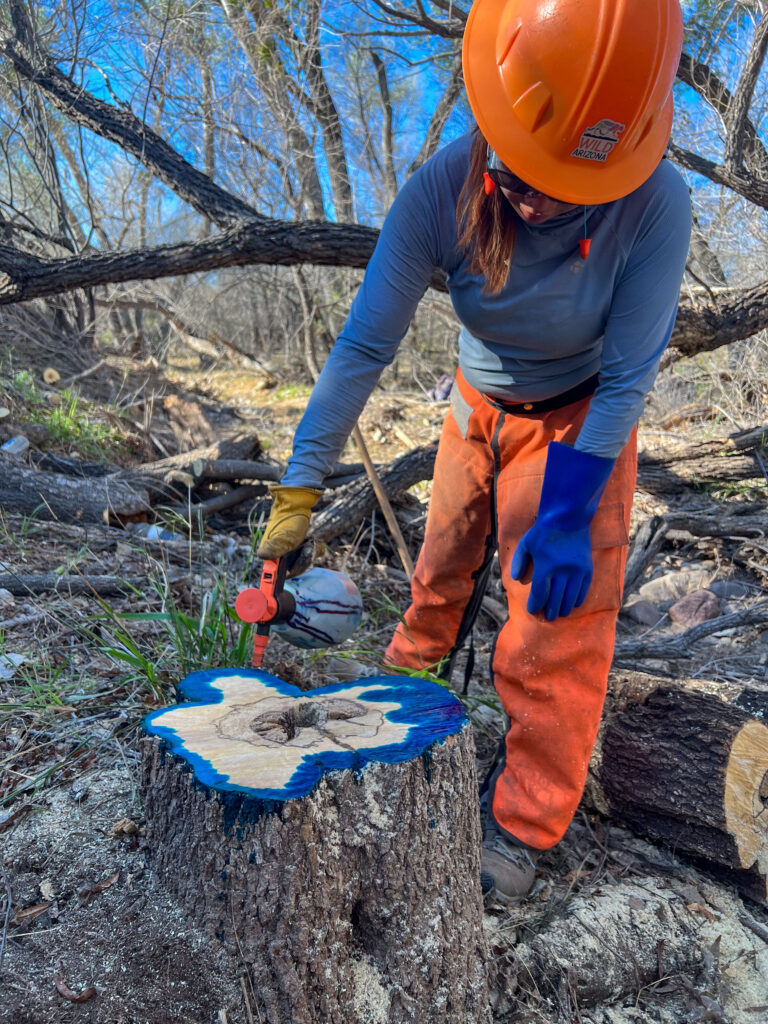
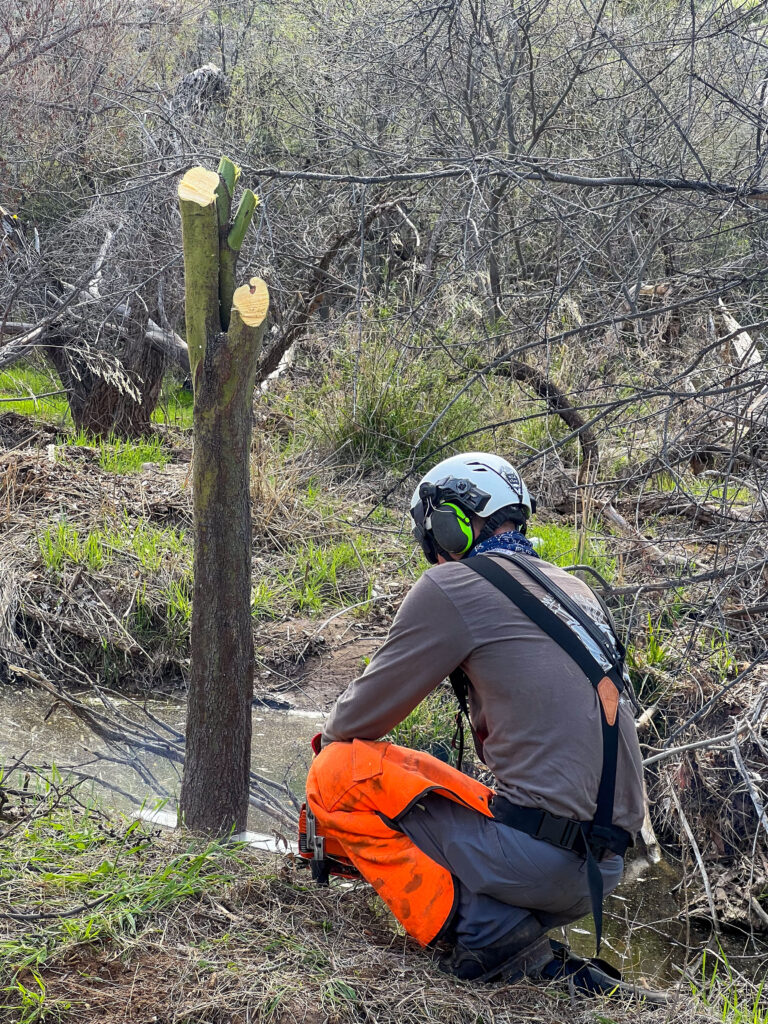
In total, we hauled 6 trailer loads of slash material to the dump. It was hard work carrying so many heavy, pokey pieces of wood out of the creek bottom and up to a dirt road where the trailer could access it. On the last two days we began treating a dense stand of tree of heaven with the “frill cut/hack and squirt” method in which we make shallow cuts into the bark to expose the cambium layer and spray that with herbicide. In contrast with cut stump treatment, this does not trigger the tree’s defense mechanism that allows it to keep spreading. Overall, it was a great first hitch in which we made initial progress on a project that will continue in the future.
